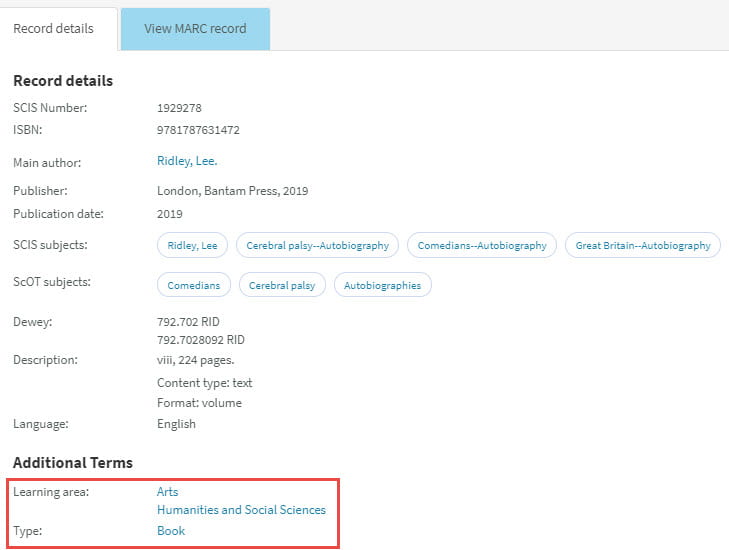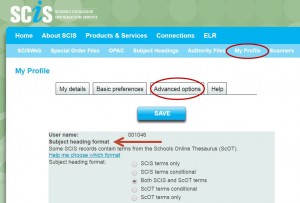Building a catalogue with SCIS APIs
Rachel Elliott
In 2017, the Schools Catalogue Information Service (SCIS) announced the release of SCIS RESTful APIs as part of a major infrastructure upgrade. For those who are part of the SCIS community, you would have lived through the upgrade, as outlined here and here. This work was driven by our commitment to improving user experience, and preparing SCIS for a library world that is changing rapidly. SCIS APIs are at the forefront of this evolution.
API stands for Application Programming Interface. In very simple terms, APIs allow different applications to send and receive data in order to communicate with each other. (This video neatly and swiftly explains the concept.) APIs are a common and integral part of your online activity. To understand why SCIS has implemented APIs, let’s start with a brief look at some global library standards.
For over fifty years, the library industry has used MARC (Machine Readable Cataloguing) for encoding data, with the Z39.50 protocol used for delivering it. These standards are widespread, reliable and consistent.
However, these standards also pre-date modern web technology, making it difficult for library systems to interact with other systems in the school environment. MARC is a custom data format delivered via a custom Z39.50 protocol, used in a world that is increasingly reliant on interoperability.
SCIS has been using MARC to encode data since our inception in 1984, and we will continue to do so. Yet, the days of delivering catalogue data in one bespoke format are behind us. SCIS APIs allow school libraries to move to a modern web-based standard to upload catalogue records.
Technical benefits of the SCIS APIs include:
- Modern communication: APIs use the familiar HTTP(S) instead of the custom Z39.50 communications protocol to transfer data. Applications that use Z39.50 protocol need to use special software, and it is not always permitted nor easy to set up within the school environment. As many of our school users are not able to utilise Z39.50 within their school, APIs provide a new means of accessing catalogue records securely and efficiently.
- Data formats: SCIS APIs provide the ability to search and retrieve records in multiple formats (MARC, JSON and MODS XML). This can make it simpler for catalogue data to be used in modern systems, through providing a more common and familiar data format for software developers to work with.
For the curious amongst our audience, MODS stands for Metadata Object Description Schema: a contemporary standard maintained by the Library of Congress. Use of MODS has the added benefit of allowing for enriched SCIS content to be included in the catalogue record – see “New vocabularies” below. - Integration opportunities: SCIS are working closely with several publishers to explore further possibilities for data integration between our APIs and digital content providers.
There are some extra content benefits, too:
- New vocabularies: Using the MODS data format allows for download of extra vocabularies that are not available in MARC. Depending on the title, this data will include audience level, learning area, resource type, and fiction vs non-fiction status. There’s been some pretty complex work done to map curricula and content sources to existing catalogue records. We believe that including the educational use and purpose of resources further enriches the value of library catalogues for students and educators, and we will continue to develop this feature of our database.
- Customised download: APIs can make it simpler for users to customise their download preferences, including the option to include or exclude the ScOT vocabulary, solving one of our most common help desk queries.
- Digital content: The rich and light-weight API search service makes it ideally suited to adding SCIS as a source for federated searches of relevant, curated online content such as websites and apps. Including digital content greatly enhances the search experience and access to resources for students and educators.

So why is all of this so important? Making resources manageable and discoverable is what we do. We want SCIS data to be modern, useful and interoperable. We want to make our users life easier and we want to make it simpler for vendors to support this. Libraries have consistently led the way in best practice information management, and we’re pleased to contribute one more step in the revolution.
The SCIS team would like to thank library management system vendors and other catalogue providers who have worked so closely with us over the last few years to advise, test and implement the APIs. Together we’re part of a dynamic library industry: making complex information simple, searchable and beautiful.
SCIS is a business unit of Education Services Australia, a not-for-profit government-owned developer of educational technology solutions. For further information, please visit www.scisdata.com.
References and further reading:
Chadwick, B. and Elliott, R. (2018). Is there life beyond MARC? – SCIS. [online] Scis.edublogs.org. Available at: https://scis.edublogs.org/2018/03/13/is-there-life-beyond-marc/
Elliott, R. (2017). Where SCIS becomes much more … muchier – SCIS. [online] Scis.edublogs.org. Available at: https://scis.edublogs.org/2017/05/16/where-scis-becomes-much-more-muchier/
Elliott, R. (2017). SCIS system launch – SCIS. [online] Scis.edublogs.org. Available at: https://scis.edublogs.org/2017/10/03/scis-system-launch/
Kneebone, L. (2015). The relationship between SCIS Subject Headings and ScOT – SCIS. [online] Scisdata.com. Available at: https://www.scisdata.com/connections/issue-95/the-relationship-between-scis-subject-headings-and-scot
Mulesoft (2015). What is an API? video Available at: https://www.youtube.com/watch?v=s7wmiS2mSXY
Loc.gov. (2019). Metadata Object Description Schema: MODS (Library of Congress Standards). [online] Available at: http://www.loc.gov/standards/mods/






